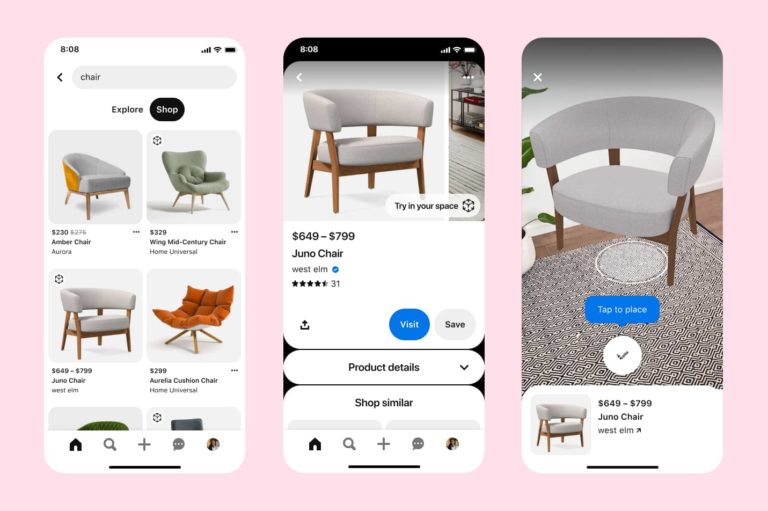
A possibly-apocryphal quote about advertising that’s attributed to American retail magnate John Wanamaker: “Half my advertising spend is wasted; the trouble is, I don’t know which half.” Advertising was more mysterious in Wanamaker’s day — more art and intuition than science and technology. Much has changed since then, and modern advertising is more data-driven, with marketers borrowing a page from direct-response pioneers to enhance campaign performance in real-time.
In the coming years, science and technology will play an even greater role in advertising as marketers look for new ways to drill down into consumers’ subconscious and inspire potential customers to take action. Advertisers already apply the principles of neuroscience to ensure campaigns resonate with target audiences and use advanced analytics to measure performance.
Advertising techniques have also evolved, and augmented reality (AR) is poised to play an even larger role in the years ahead. Some of the current applications are broadly used now, e.g., apps that let consumers see how a piece of furniture would look in a space or let homeowners get a sense of how painting their walls a different color would transform an area instead of holding up swatches and trying to imagine it.
At CES 2022, Microsoft announced a surprise partnership with chip manufacturer Qualcomm, indicating the potential for the software giant to develop smaller chips and better software for AR glasses or mobile AR applications. Add in the metaverse, and the possibility for further AR growth in advertising is extraordinary. AR experiences like these can move consumers closer to a purchase decision.
Will AR Make Traditional Advertising Obsolete?
This raises a question: Are technologies like AR and virtual reality going to make other forms of advertising obsolete, or are they additional instruments in the toolkit? AR first became familiar to many consumers during the Pokémon GO craze several years ago, and the trajectory of that game may provide an answer. The game has been downloaded more than a billion times, giving the familiar Pokémon franchise a new dimension.
In one sense, the game modeled a new method of engagement that advertisers can leverage. But the fad phase of the game passed. Similarly, AR can add another dimension to brand identity or provide practical ways to move consumers toward a buying decision, such as offering a virtual fitting room that people can use to “try on” clothes. It’s a powerful and engaging tool. But is it THE tool?
Recent research suggests AR is more effective than traditional advertising because it’s better at engaging people. But there are also reasons to be skeptical about AR making other forms of advertising obsolete. The first is that the novelty of AR will wear off eventually. People are intrigued by it now because it’s still relatively new, but increasing use and familiarity may lessen the thrill.
It’s also important to keep in mind that AR isn’t accessible to everyone — it requires a smartphone capable of rendering AR to use it. And even if everyone had the right type of smartphone, the concept isn’t equally appealing to all audiences. There are other interactive technologies, such as QR codes, which may be a better fit for some customer segments or in certain situations.
It’s All About the Emotional Connection
Advertising that works is advertising that engages. Newer tools like AR can engage consumers because they provide a novel way to interact with a brand, put products in a new context, and/or provide filters that let customers visualize and virtually sample products.
A great example of the latter is L’Oréal’s ModiFace, an AR tool deployed on Facebook that reimagines the makeup counter, bringing it right into people’s homes. L’Oréal also launched the Colorsonic and Colorright technologies ahead of CES this year. Colorsonic aims to reinvent the accuracy and convenience of the at-home hair coloring experience through technology and data, while Colorright is salon-focused, using AI, AR, and data to determine hair history and deliver a consistent color experience.
AR and technology advancements like these make marketers as excited as kids in a candy store. But it’s important not to lose sight of what advertising is for, which is to create connections that build or enhance brands and motivate consumers to take specific actions. So, while the bells and whistles associated with an ad innovation may attract attention with the “cool” factor, they also need to deliver. L’Oréal’s ModiFace passes that test, but not all AR applications in marketing will add value in the same direct way.
It’s more critical now than ever before for brands, marketers, and agencies to evolve and communicate with customers where they are and in the language they prefer. Tried and true advertising principles are still operational, and traditional methods still work when they result in vital connections. The same is true of new tools like AR. That’s the reality behind augmented reality.
![]() Karla Crawford-Kerr is Vice President of Marketing at Hawthorne Advertising. A version of this post first appeared in Street Fight, published here under an editorial partnership.
Karla Crawford-Kerr is Vice President of Marketing at Hawthorne Advertising. A version of this post first appeared in Street Fight, published here under an editorial partnership.

